
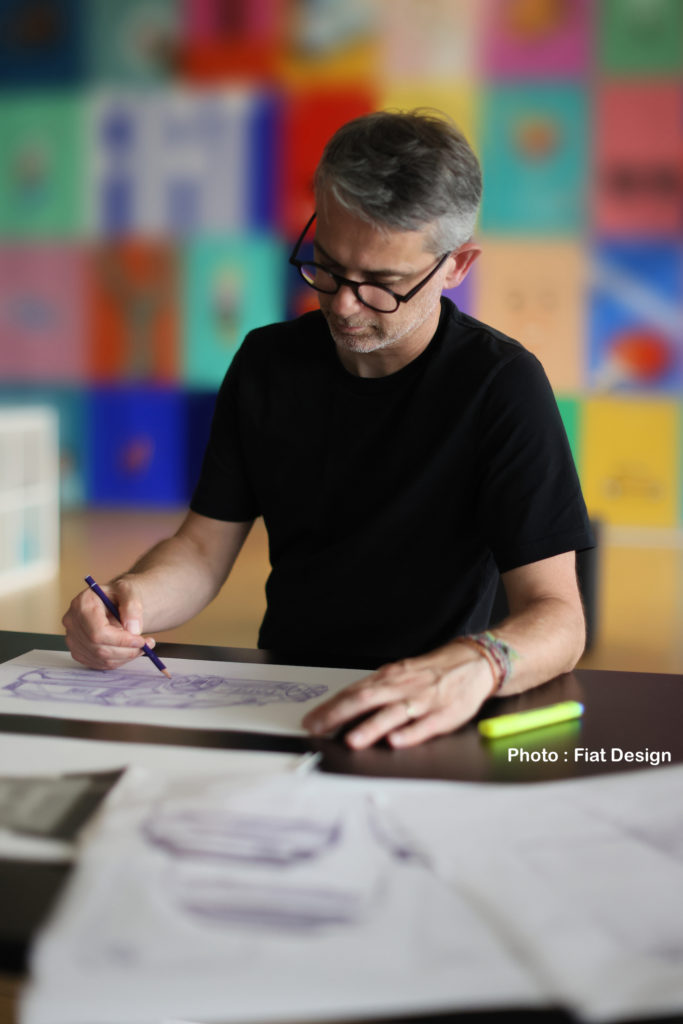
Here are eight ingredients that make up the best Italian dishes: pasta, tomatoes, Parmesan cheese, basil, mozzarella, olive oil, of course, but also balsamic vinegar and chilli peppers. François Leboine explains that these Italian flavours are all part of the DNA of Fiat and Abarth design! That’s enough to whet your appetite. But before discovering the French designer’s recipes and sitting down to eat, let’s take a quick look back.
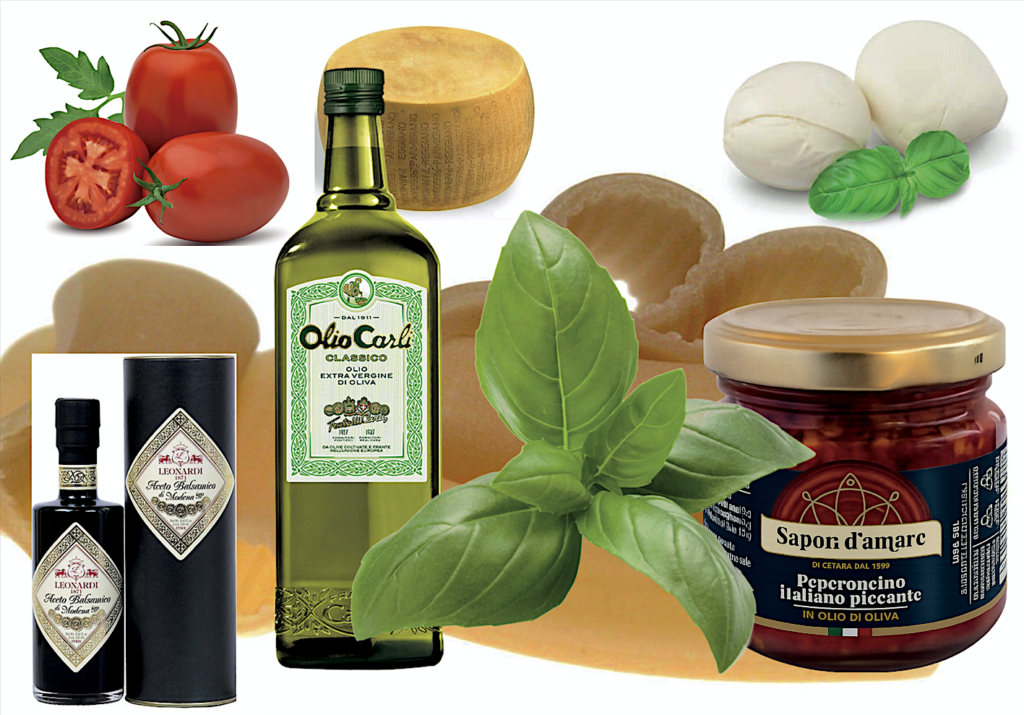
Born in Normandy in the mid-1970s, François Leboine enjoyed a distinguished career at Renault, where he was responsible for designing the ECHO project in 2019. He didn’t wait for his baby to be transformed into the R5 E-Tech: in 2021, he left the French manufacturer – where he was responsible for concept cars, among other things – to take over as head of design for the Fiat brand in Turin. He is one of many transfers that took place between 2020 and 2021 between the Renault group and the Stellantis galaxy. How could he turn down such a position after building up solid experience in all areas of design and management?

Because the job of brand design director is no longer quite the same as that of designer, even though François asserts that “with concept cars, you develop global expertise. At Renault, I gained experience in both production car development and concept cars. When I arrived at Fiat, with knowledge of both professions, I knew which path to follow. I should add that when I arrived, we had to define a design strategy that made sense for the brand and find a common thread that would bring everyone together around the same idea. This new job is like being a conductor: you get everyone on the same page for the same project.“
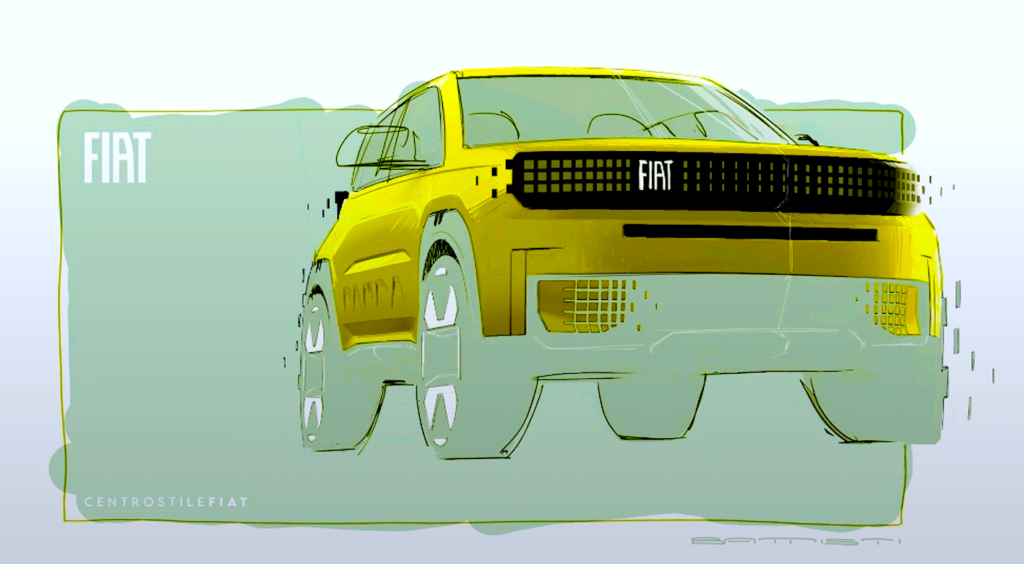
For François, designing the Fiat Grande Panda just after creating the revival of the Renault 5 below must have helped, right? “What helped me most was my 22 years of experience at Renault. It allows me to immediately sense what will work and what won’t, and it prevents me from putting my foot in it! But the R5 and the Fiat Grande Panda were born in two very different contexts. At Fiat, it was a completely different story because we had a multi-energy architecture and not a 100% electric one, which was totally different. We also had to find a contemporary interpretation of a car that was more generous in size than the original Panda, while maintaining a link with it, like a common thread…“
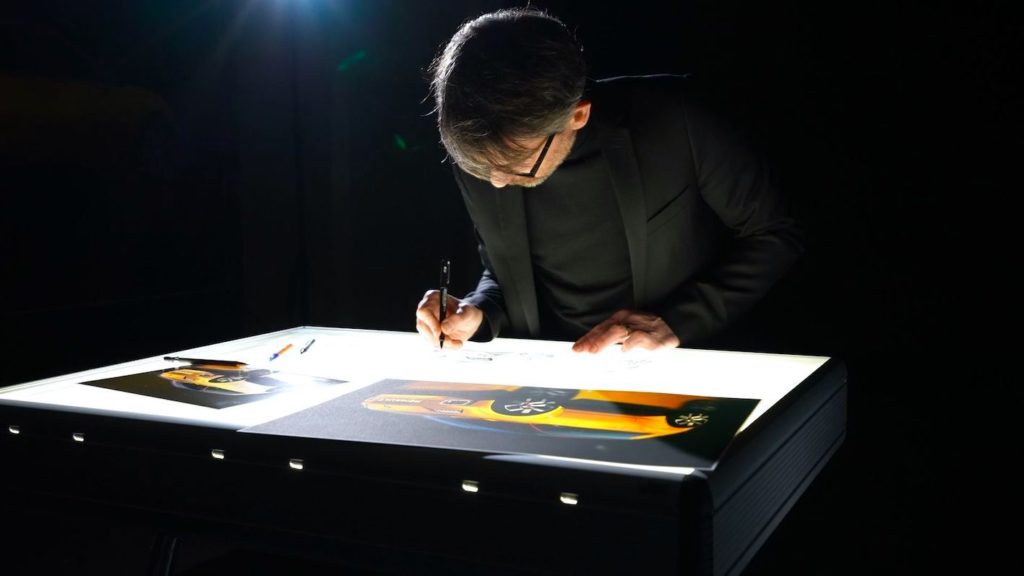
François Leboine’s arrival in Turin coincided with the launch of the F1 programme for the future Grande Panda. No sooner had he set foot in Italy than the designer had to quickly come up with a plan. But he didn’t rush into anything. “I spent the month before I arrived thinking about what I could do when I got there. It was very quick because we didn’t have much time! The design team was very responsive. I arrived in June 2021, and by the end of July we had a digital concept.“
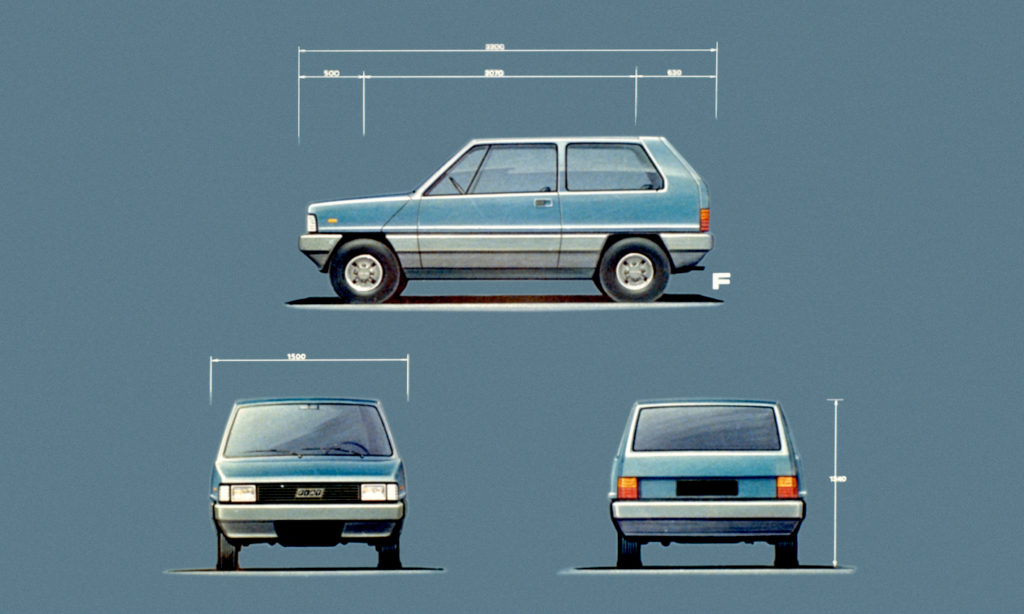
“In September, we already had the first 1:1 scale foam models that represented the style, without the finishing details of course. The idea was to test a package for the 1980s Panda (above) converted to a larger scale. What interested me at the time was designing a modern vehicle. If you break down the Grande Panda and look at each detail, it has nothing to do with a 1980 Panda. But when you put it all together, it becomes a contemporary Panda! You can see the outlines of the original Panda emerging, and that’s the strength of the project.”
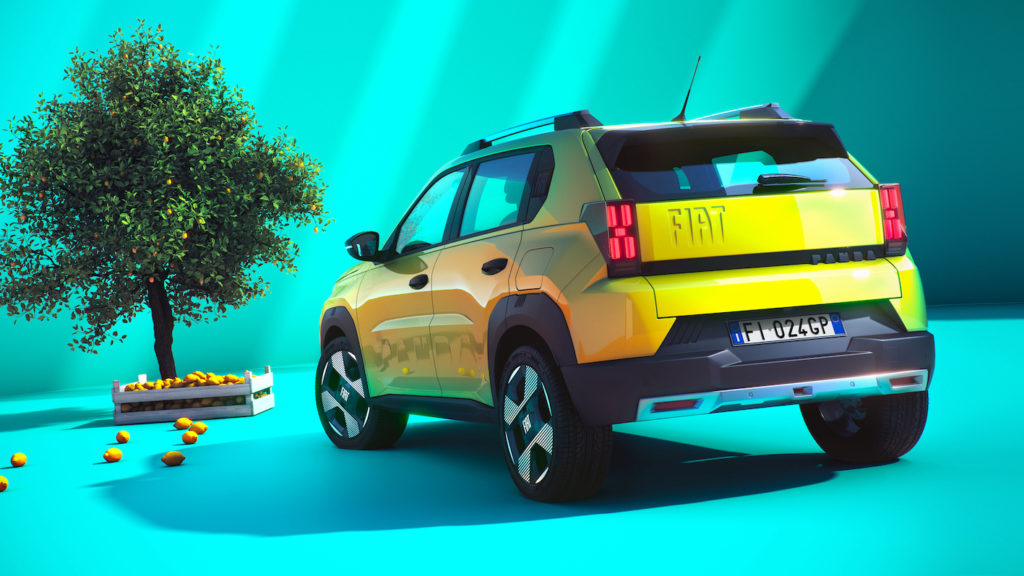
It all looks so simple! But it’s not the result of chance, but of skilful and rapid work. “We did move very quickly. We spent a month drawing to find our design territory. We quickly digitised two proposals and, using these files, we milled two 1:1 scale foam models to see the proportions. We identified what worked and what didn’t, such as the position of the windscreen, the camber, the height, the belt line, and all the other classic design stages. But we had the object in 1:1 scale with us. “
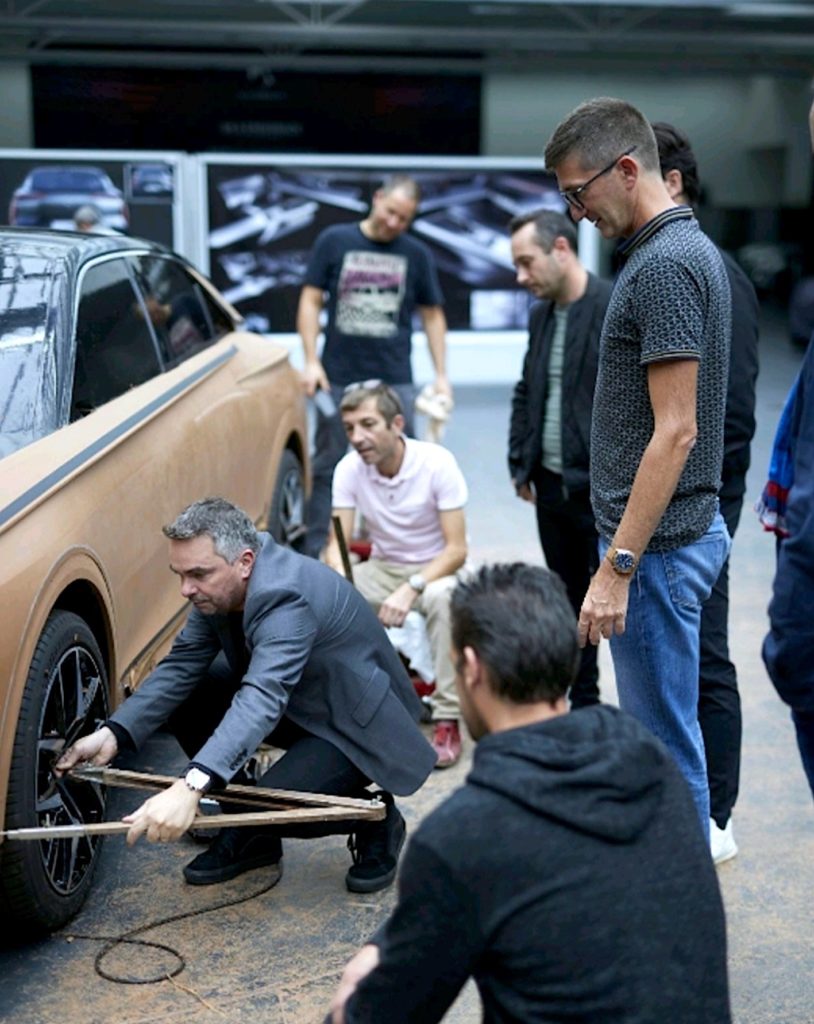
And so then, we imagine that the choice of style theme is made on a clay model. Even the most 3D-digitisation-savvy design studios go through this stage, such as the DS Automobiles studio… Well, think again: the Grande Panda was born without ever seeing the clay model stage! “After our two white foam models, we went straight to the digital stage. We developed the car by incorporating all the engineering constraints that arose as they came up in the digital model, and we took the model from the design selection milestone and customer testing (made of resin and featuring all the details, including working lights, transparent windows, etc. NDA) as our reference model.“
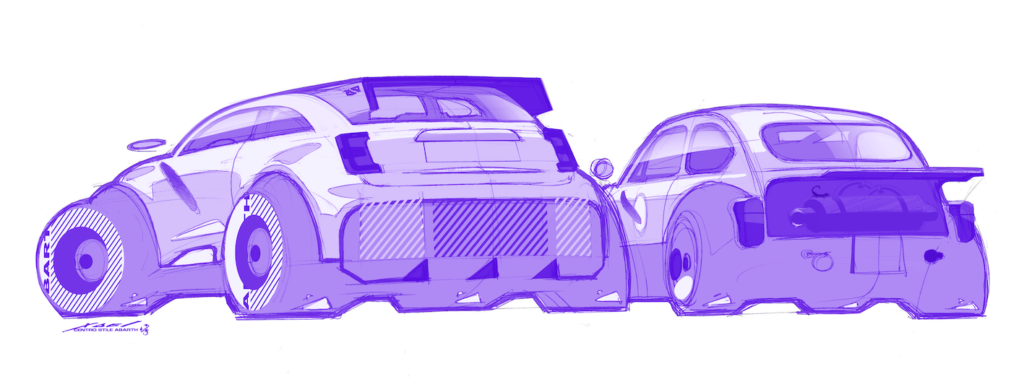
To understand this work carried out in such a short time frame, it is important to explain that the Fiat design team is similar to a commando unit: reduced to just twenty creative individuals. And the designers are not limited to the Fiat brand alone, but also work on Abarth, shown above. “The team is small but efficient. It is made up of around 50% Italian and 50% international designers, including French, Brazilian and Indian nationals. This gives us a real Italian culture without cutting ourselves off from the international scene. Some of them joined us because they were determined to design Abarths! They even have the scorpion tattooed on their bodies! Our designers are proud to be here, and that’s important in a team that moves forward, makes suggestions and is creative. A team that pushes the boundaries.”
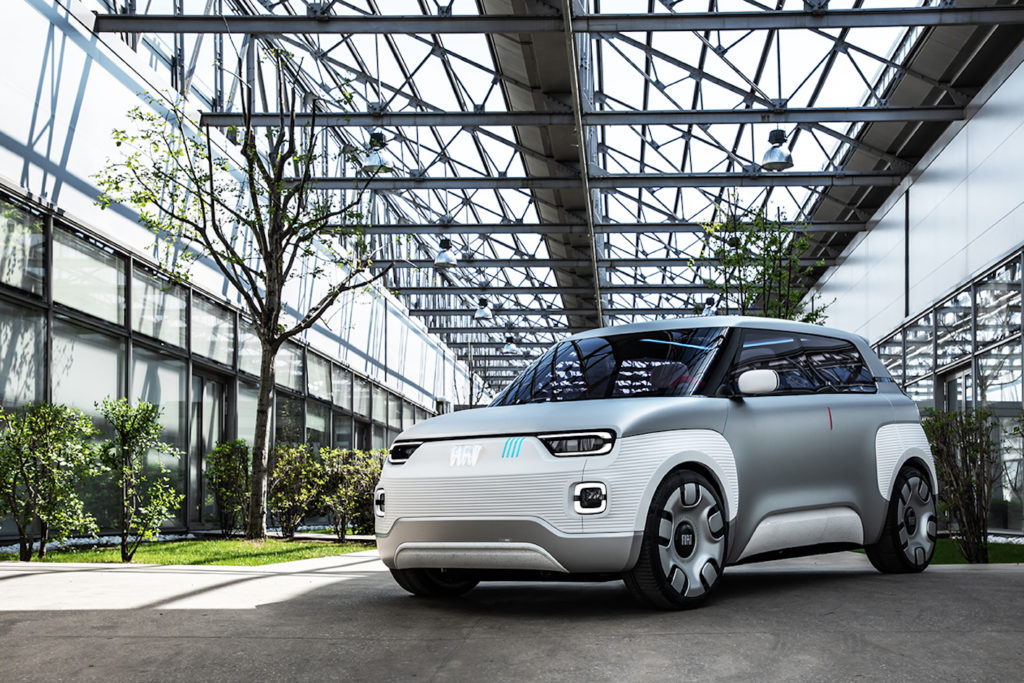
A team that is certainly pushing boundaries, but one that has shelved the Centoventi concept car (above), which evoked the Panda of the future and was unveiled at the 2019 Geneva Motor Show. “No, it hasn’t been shelved” François Leboine interrupts me. “When I arrived, there was this concept car that I also thought was excellent from a design philosophy point of view, and we respected that. But the concept couldn’t be used as it was on the Grande Panda project architecture. In terms of proportions, it wasn’t feasible, and that was the first thing I justified. We tried to transpose the concept onto the Grande Panda architecture, but it didn’t work. But beyond that, I had other intentions, such as pushing the project into a higher segment than the current Pandina.”
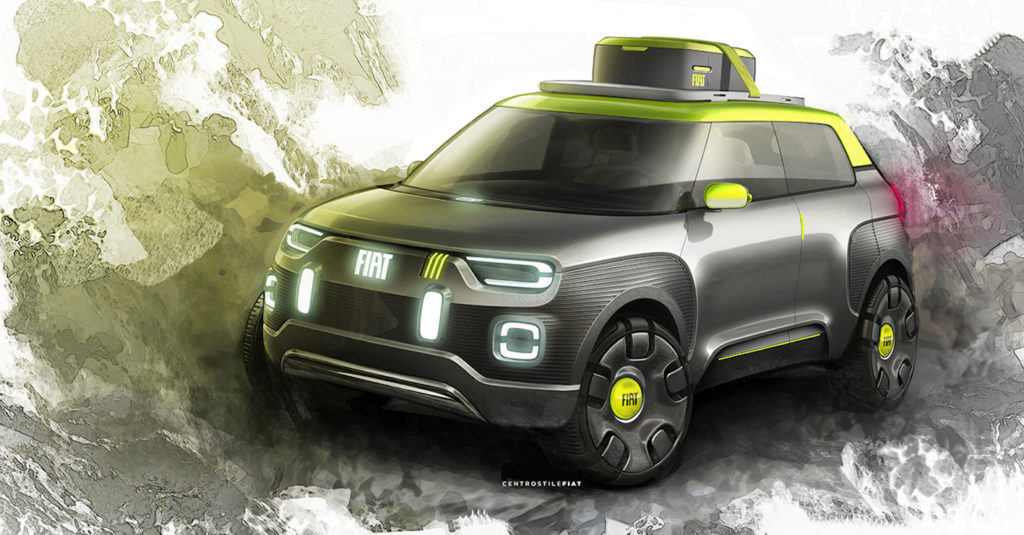
“We also needed to express our heritage, because we knew that the name Panda would be used in one way or another. So we needed a stylistic story that made sense and had a clear link to the original Panda. That wasn’t at all obvious with the architecture imposed on the F1 project! The design work was about finding a way to connect this car with the history of the Panda. That’s why, from a stylistic point of view, I preferred to go for a different type of object than the Centoventi concept car to better fit the spirit of the international B SUV.‘ And above all, we mustn’t forget that at the time, ’the project was designed as a global product and therefore needed this more crossover aspect, where it would make sense in the countries where it would be marketed.”
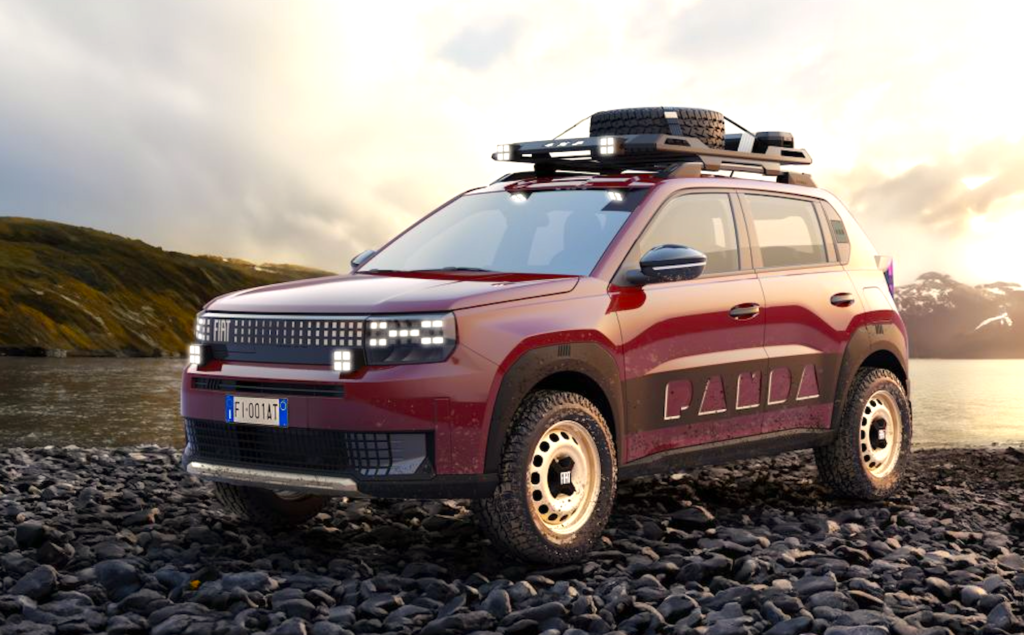
François Leboine also mentions the key role played by Jean-Pierre Ploué, pictured below, who is currently responsible for design management for Stellantis’ European brands. His role is to ensure that each brand’s “manifesto” is respected, defining the stylistic and graphic language and even the colours and materials used by each entity, so that all brands have their own unique identity and territory. “Jean-Pierre Ploué pushes us to develop specific territories for each brand. He is a great support in defending the strength of our designs to brand and group executives. This was particularly the case for the Grande Panda project.“
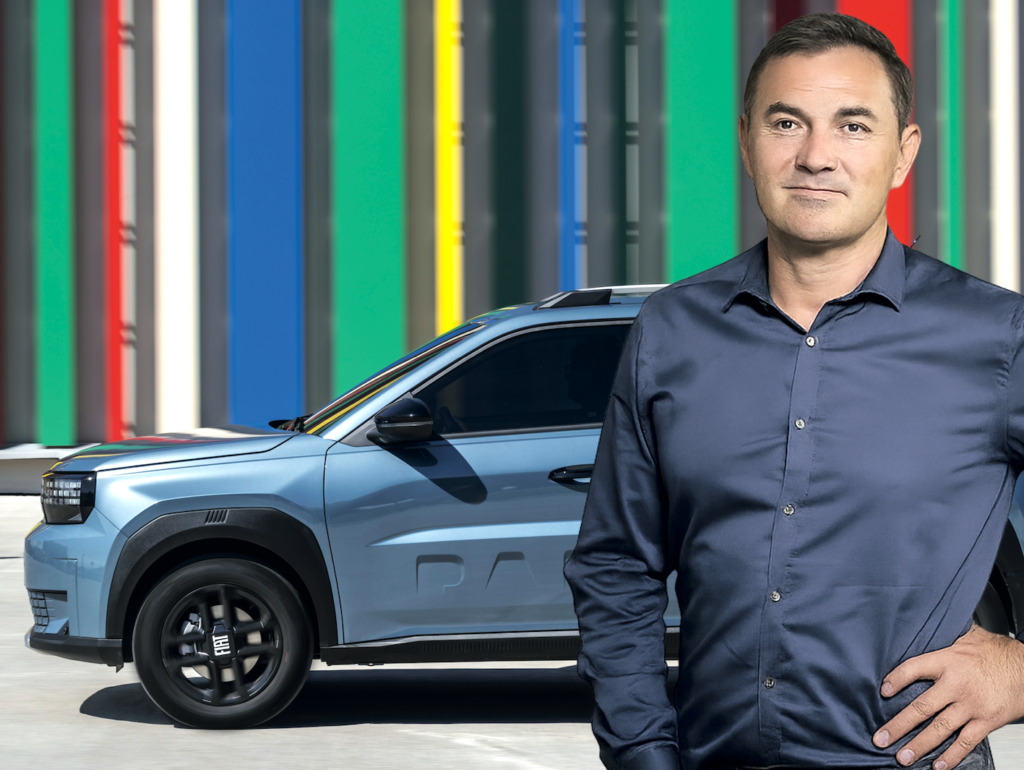
The Fiat design studio is like a family. But the Grande Panda will also serve as the basis for a new family of products that have already been presented in concept form. Was this product plan already in place when François Leboine first walked through the doors of Fiat Design? “When I arrived in 2021, there was obviously a new product plan for Fiat, coinciding with the creation of Stellantis, with Olivier François as brand boss. The idea was to develop several models of different sizes on the Smart Car platform. That was just the product request. As for the design and brand history for these products, nothing had been decided apart from the Centoventi. We had to define the design direction for these other products.“
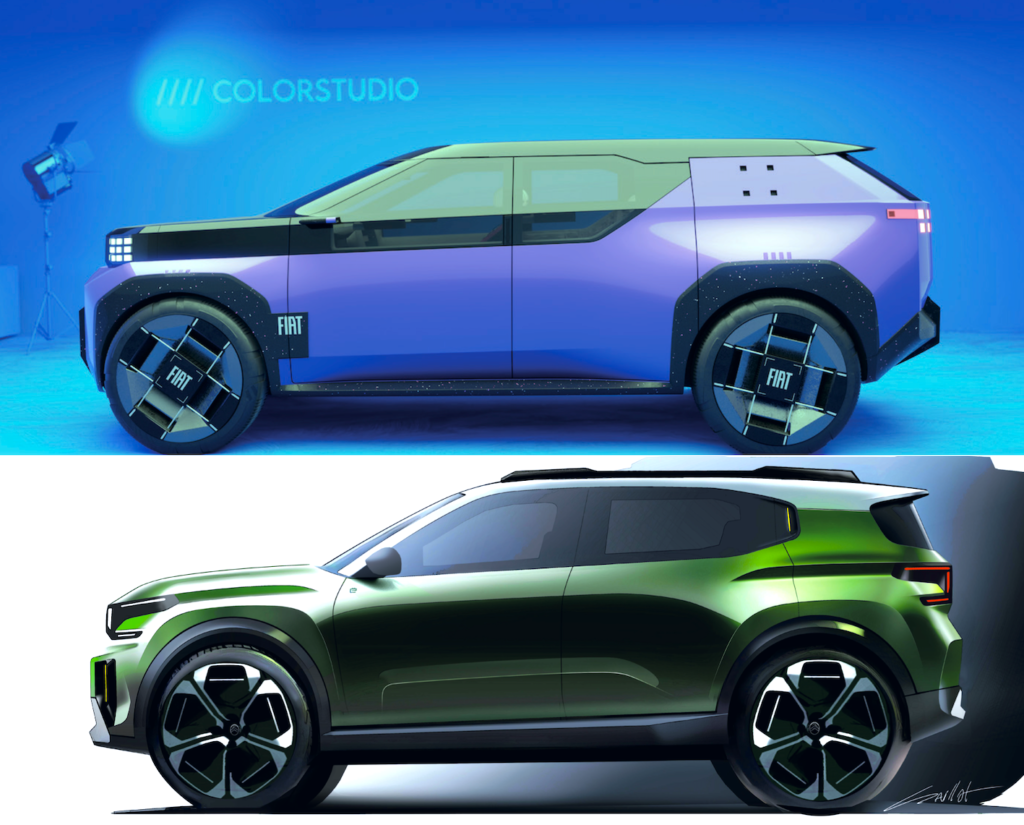
“The enthusiasm for the Grande Panda F1 project generated a real aesthetic bias and led to the following reasoning: the iconic 500 is so strong that it tends to overshadow the brand. The simple idea was to develop another icon – the Grande Panda – that would be as different as possible from the 500 and create another equally strong image. With these two very different and very strong products, the Fiat brand regained some of its weight. Once we had achieved this with the Grande Panda F1 project, we built on this success to develop a family of models that are moving upmarket and increasing in size.“
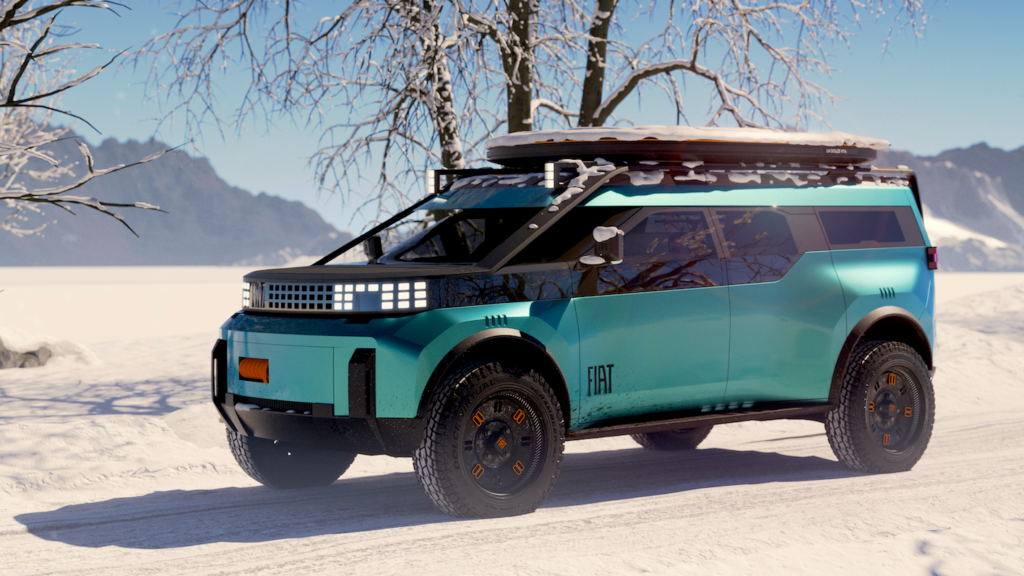
Creating a family derived from a single base is a well-known challenge within the Stellantis group, where carry-over (sharing common structural parts, platforms, etc. between different models from different brands) is king. As is the case with virtually all global manufacturers. However, has carry-over become a real constraint for designers within the group? François Leboine dismisses the idea out of hand. “Carry-over has always existed. It’s part of our daily lives; it’s the very definition of industrial design as we learn it at school: taking a constraint and turning it into an opportunity. There’s no such thing as a designer without constraints!“
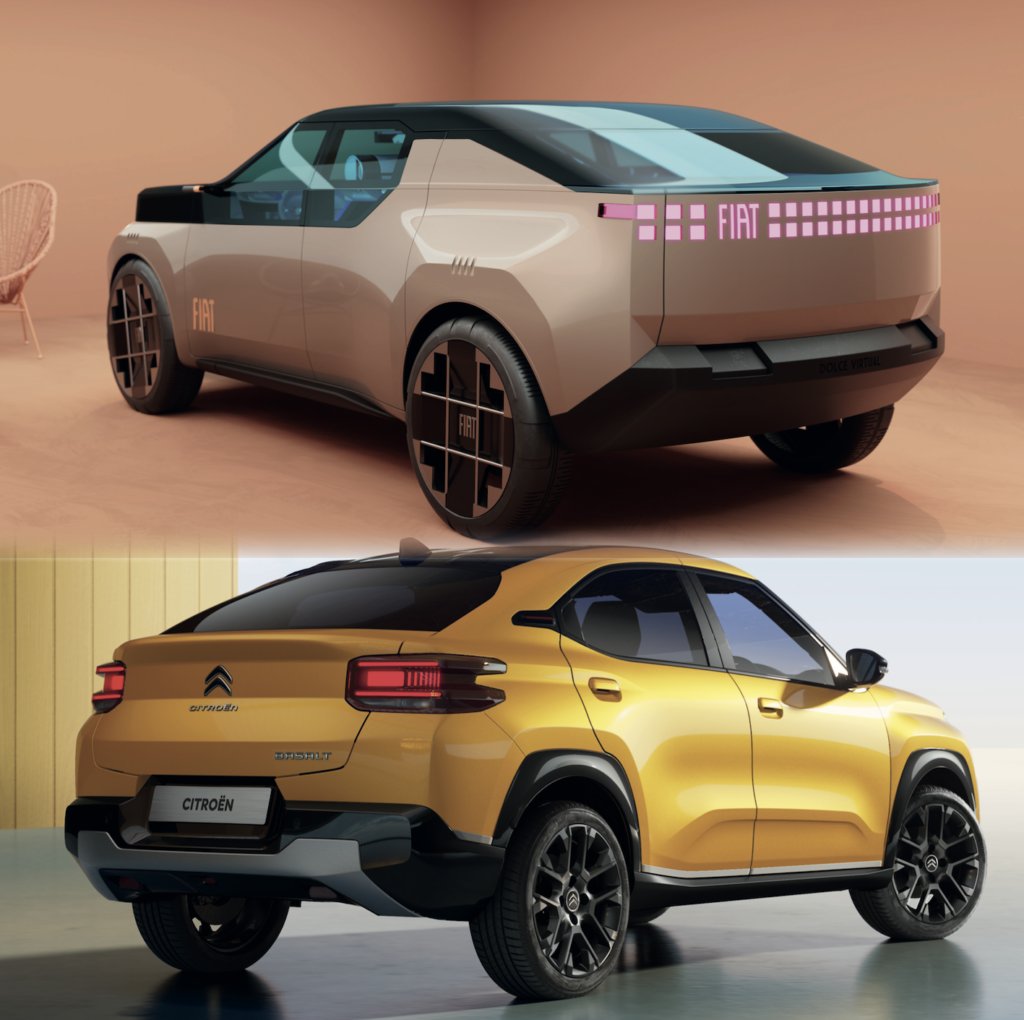
François Leboine goes further in his explanation by returning to the very essence of Fiat’s models: “Trying to make affordable products that are accessible to as many people as possible and designed for Europe and Brazil requires reducing design and manufacturing costs. It is necessary to mention carry-over in development. Not doing so would go against what we want to design as a product.” However, it is not only the platform that is affected by carry-over at Stellantis: the sticking points seem to be multiplying: windscreen, roof height, etc. “I’ve always been immersed in this context and I’m not shocked by it. It’s also our job to be able to design new objects from existing ones. And when I was little, I used to play with Lego®, and I always knew how to make different objects with the same pieces!“
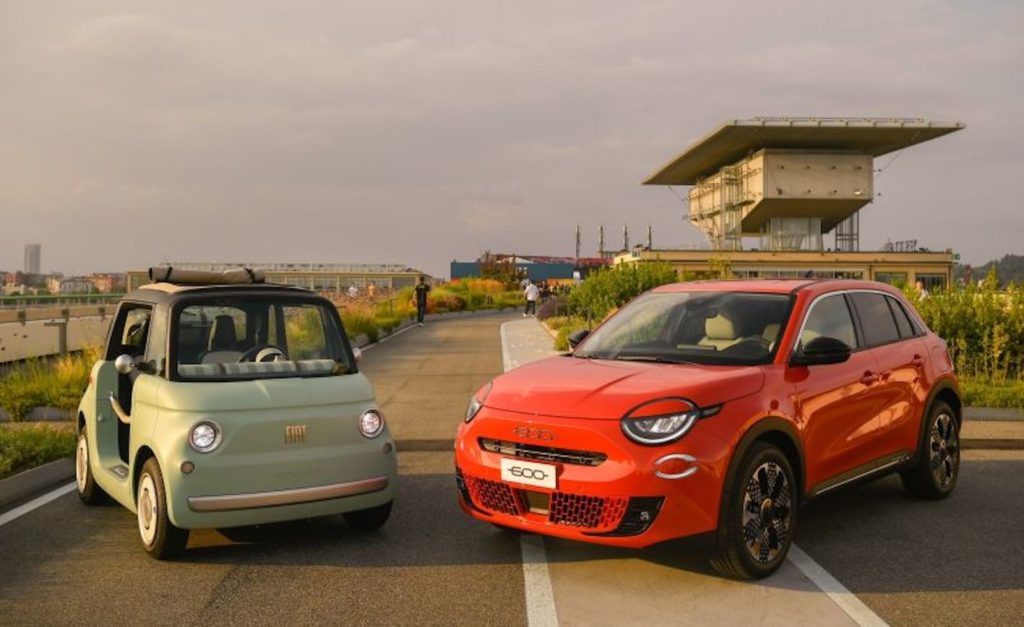
“At Fiat, my job is to offer the best possible design at an unbeatable price. We discuss this with Guillaume Clerc, the product director for Fiat and Abarth. If we consider that carry-over will make the current project more neutral, then we’ll put the money on the table. We don’t have any carry-over that’s holding us back. For example, we created the charging socket at the front of the Grande Panda (below) by cleverly circumventing the carry-over and putting the money where it’s needed.” Clever design to cost. Saying no to gimmicks and excess does not prevent you from spending a few extra pounds to make the car smarter. Even and especially for cars that are aimed at the widest possible audience.
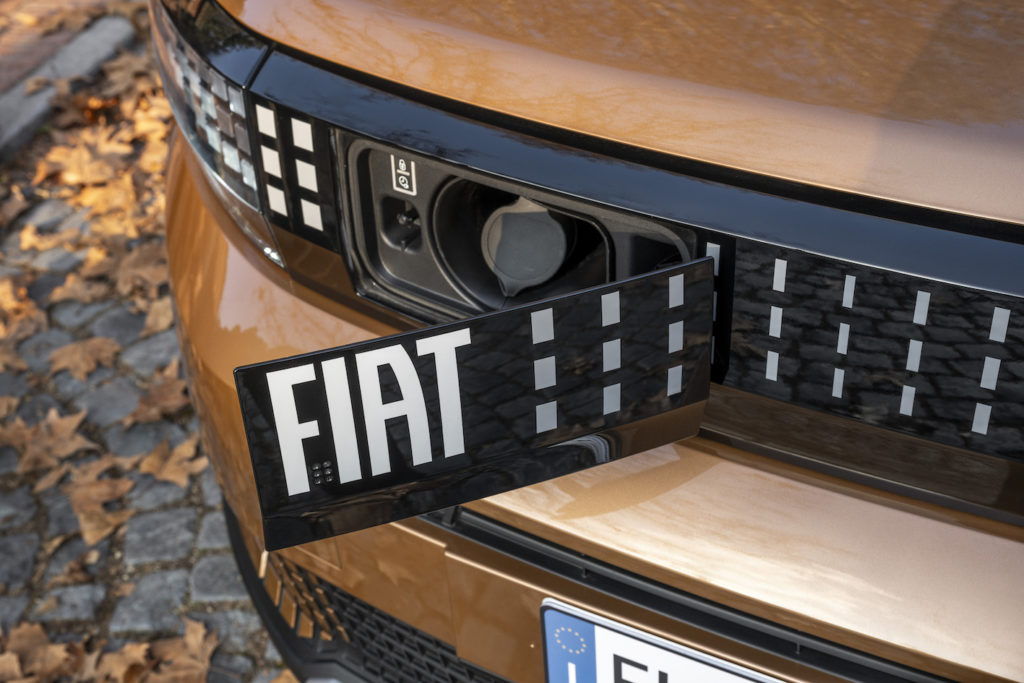
Speaking of intelligent design, there is a global star that has found its way into the Fiat design studio in Officina 83, a former factory in Turin that has been transformed and now houses the design departments of Alfa Romeo, Fiat, Lancia, Abarth and Maserati. You know this star: it is highly intelligent, manufacturers around the world treat it with interest and sometimes incomprehension, and above all with discretion, because the services it provides are countless and must not fall into the hands of competitors. This star is artificial intelligence. Is it on a par with creation, or is it ultimately just a time-saving design aid?
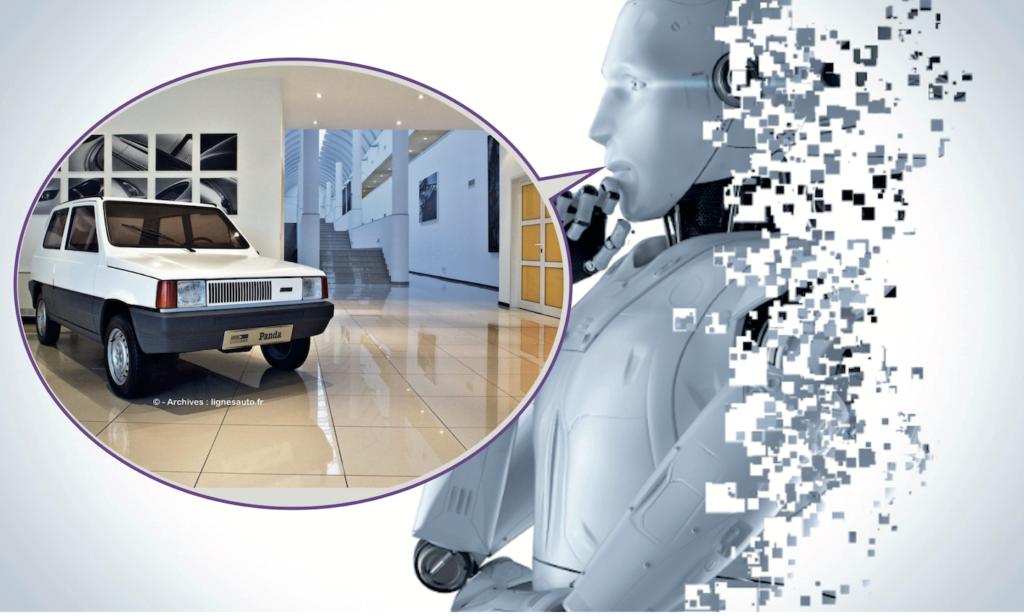
“Both! In terms of deadlines, it’s like all the tools that have arrived in design studios in recent years, with a noticeable acceleration to bring cars to market faster. AI obviously allows us to compress design lead times. It saves us time on film and image calculations and it saves us time in getting our ideas across to management. Because it’s not enough to have ideas, you also have to sell them, and I’m talking about internal communication here.”

“On a creative level, AI is a tool that can quickly interpret intentions. It will increase the power of designers’ creativity tenfold. Let me explain: we’ve noticed that when we feed artificial intelligence with what we’ve designed here, internally, with our own design and creative image, and then feed it with intentions, we increase the designer’s creativity tenfold. AI generates proposals that are truly amazing and creative. But it is simply extremely dependent on what we have given it beforehand. So I can’t say that it isn’t creative, because we have done things with it that we might not have come up with ourselves. It helps us find these avenues because we provided it with all our input at the outset. I feel that it’s a relatively human system, because if we cut off our creative input, it will simply produce a generic design. And therefore a design without character.“
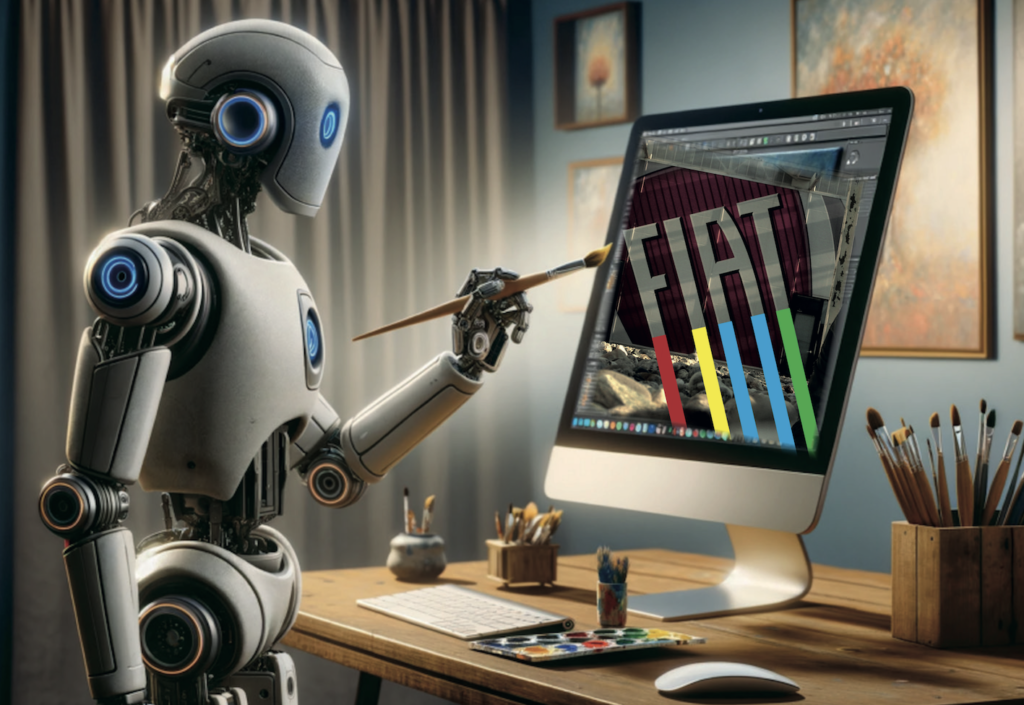
“AI offers many possibilities, but in the end, we come back to the basic principle of design: choice. Where do we want to go? What is the brand image, what is the design strategy? Because we need to have a strategy and a defined territory to be recognisable. And so human decision-making is always there. Ultimately, we come back to the fundamentals of creation, which is having an intention, expertise and vision to know where we want to take the brand. AI does not change the reality of the creative world, but it is an extremely powerful and effective tool that surprises us with its ability to generate things that we might have overlooked in our developments.“
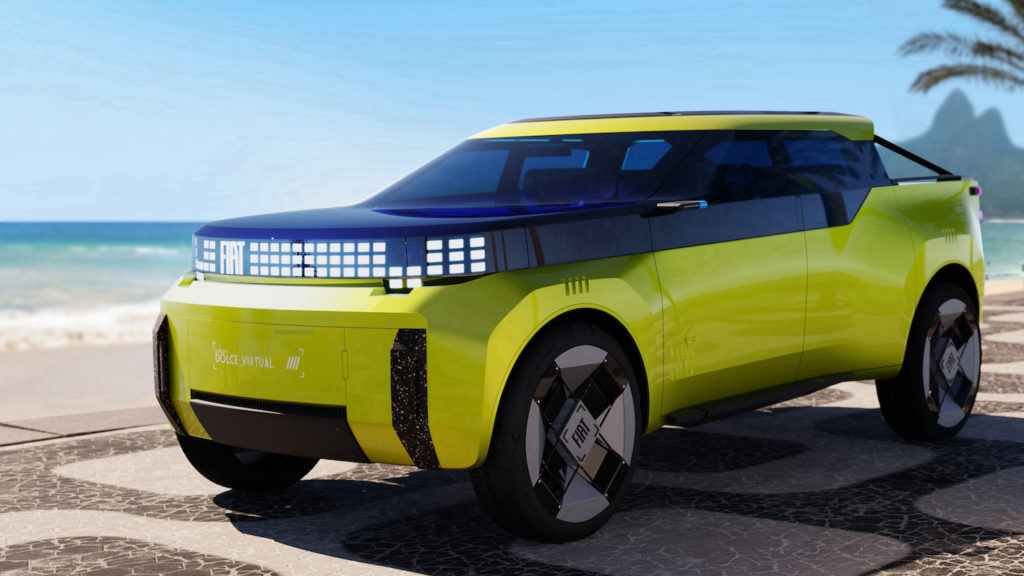
We’ve come a long way! All the car images created with AI on the web are not at all representative of the power of this tool. In this case, the images are only fed with widely available and already outdated data! We need to imagine that manufacturers’AI is fuelled by the brand’s own forward-looking projects, and then we enter another, more powerful universe of creativity. This is undoubtedly why manufacturers are reluctant to broach the subject, as it is extremely sensitive.
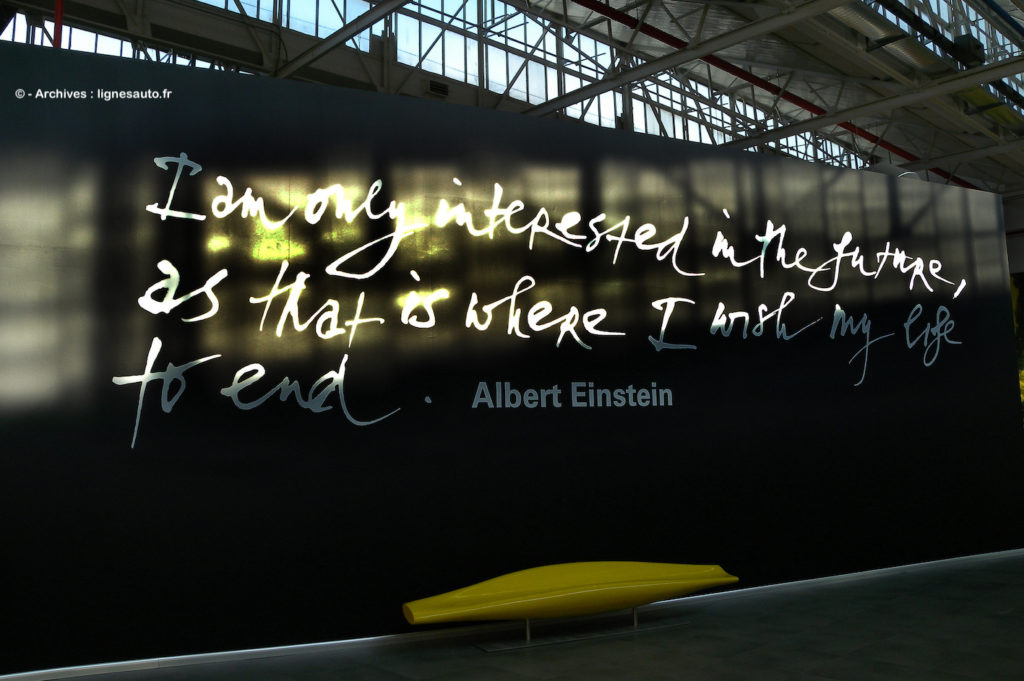
But wait a minute, LIGNES/auto?! You’ve whetted our appetite with François Leboine’s love of Italian cuisine and his explanation that the key words of Fiat design refer to ingredients in Italian recipes… Italy, where François settled with his family, is a choice that has not put him off in the slightest, quite the contrary! And the cliché that ‘the food is good’ is no cliché for him. “It’s more than a cliché, it’s a reality. From the very first day in Italy, everything went well. It’s easy to fit in because the culture is similar enough to ours. In fact, there’s no culture shock, and I think food plays a big part in helping us settle into Italian life! Yes, the food is good here, and that helps on a daily basis.“
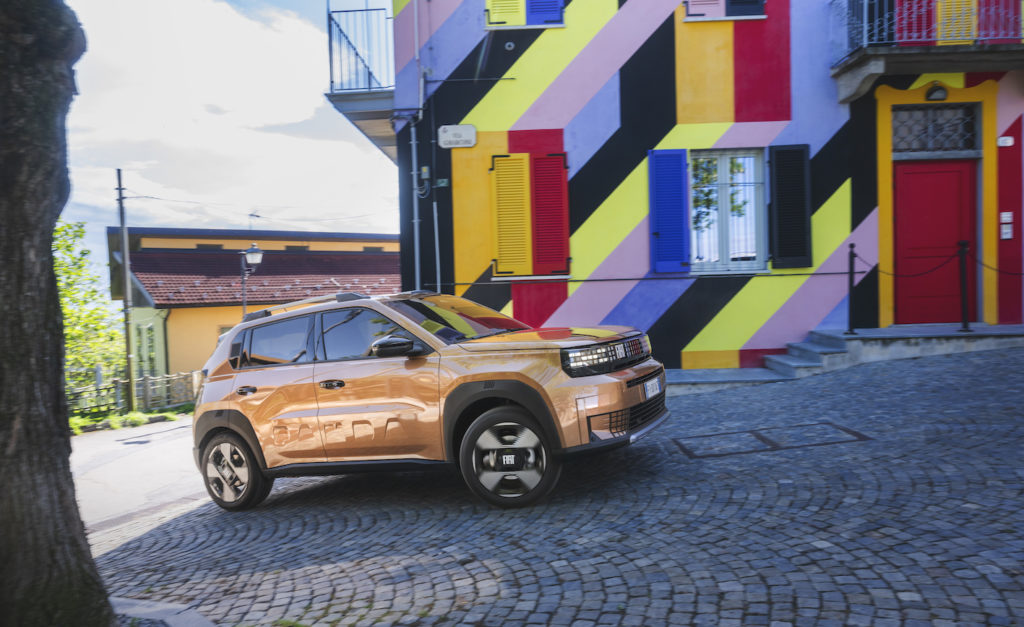
When asked about the key words that define Fiat’s design DNA, François simply draws on the ingredients of Italian culinary culture. “For the Grande Panda, I would highlight simplicity. And behind that word lies a huge amount of work, because there is nothing more complicated than creating simplicity! It makes the object accessible and offers a design that will stand the test of time, because simplicity ages better. And simplicity in Italian culinary culture means pasta, of course!“
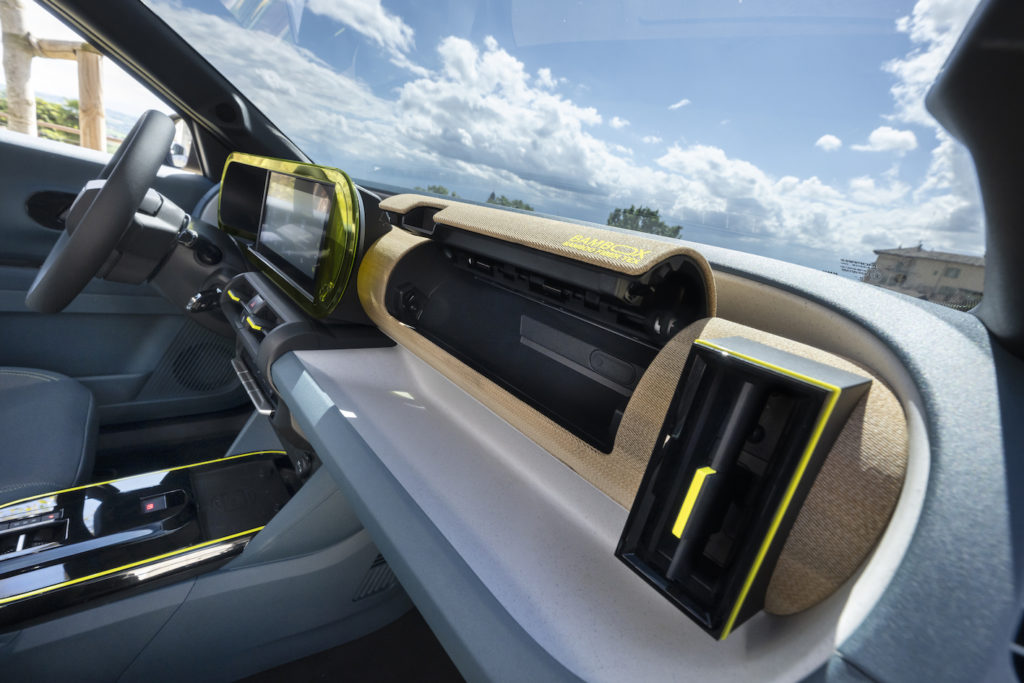
“Our second keyword concerns an area that manufacturers often leave until last: colours and materials. We work on the colours and materials associated with our design at a very early stage. Why? Because materials have a huge impact on design. Rather than dealing with this issue at the end, I prefer to address it right from the start of the project. This means that designers take materials into account, as with the bamboo used for the glove compartment in the Grande Panda (above). If the material speaks for itself, there is no need to design for the sake of design. We keep it simple. And the most beautiful colour of an ingredient that is vital to Italian cuisine is the red of ripe, plump tomatoes!”

“So yes, our entire DNA is based on Italian cuisine, and each ingredient represents how we design a Fiat. The attention to detail in our design is like the little basil leaf that accompanies a dish. The Italian side of our design is enhanced by our work, just as a dish can be enhanced by Parmesan cheese. The fact that we can “upgrade” our design and be flexible over time by adding things to our cars is like mozzarella.”
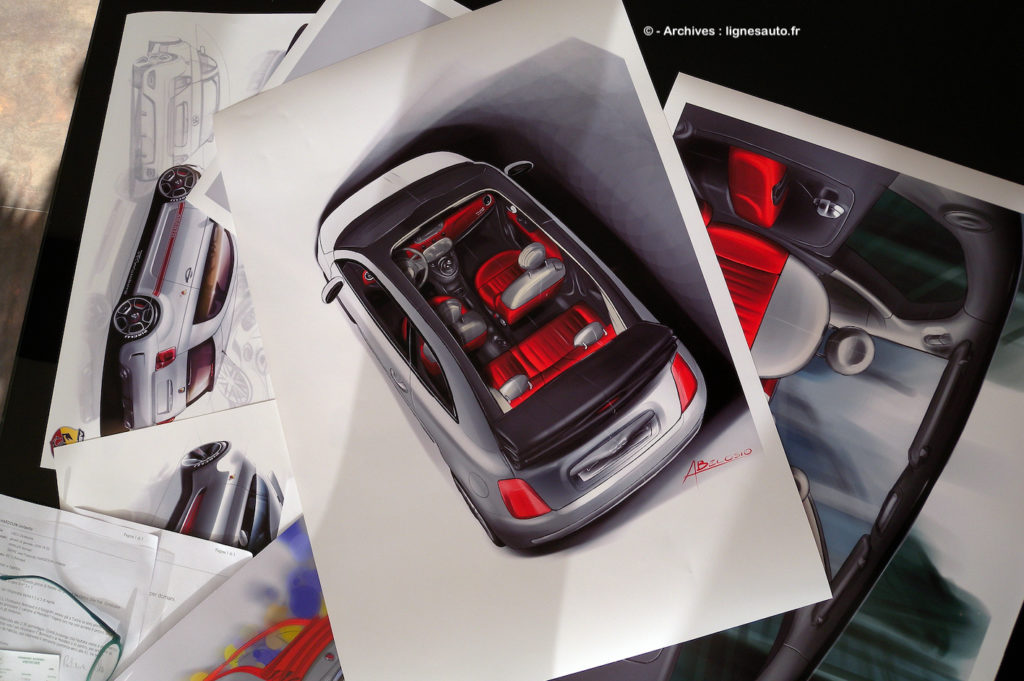
“And then there’s the role of olive oil: it’s the invisible binding agent in a dish, and here it represents connectivity in our vehicles, and all the work on digital technology, UX and how we’re going to handle it, always with a view to simplifying its use. Internally, we call the UI “TECH IT EASY”! The last two ingredients relate specifically to the 500 and Abarth. When we design a Fiat 500, it’s not a basic car, it’s the premium car in the A segment. So we need something extra, what we call the drop of luxury. A drop of premium balsamic vinegar! And finally, we have red chilli pepper for our Abarth creations. Obviously!
LIGNES/auto vi augura buon appetito!
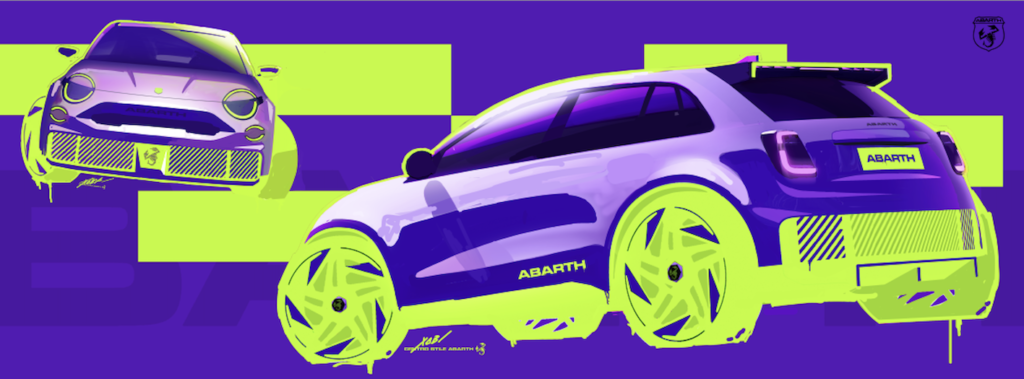
LIGNES/auto also has a bilingual Facebook page: https://www.facebook.com/lignesauto/
BONUS #1: Meet Giugiaro
We asked François Leboine if he had met Giorgetto Giugiaro during the creation of ‘his’ Panda. Giugiaro, remember, designed the Panda during his holiday in August 1976! “We met him with Jean-Pierre Ploué a year after the project was launched. We already had the model and went to see him to discuss the history of design in general.”
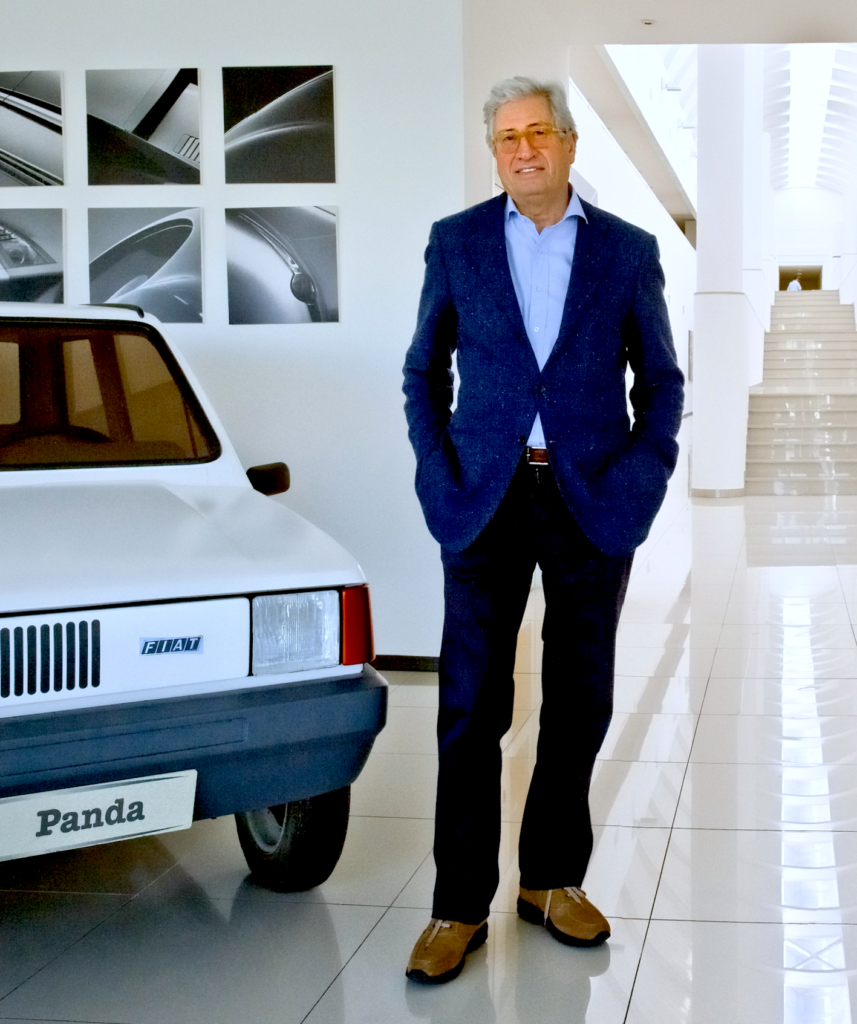
“It was very nice because he told us dozens of incredible stories from a completely different era of his youth, a time that is unimaginable and impossible today. But we enjoyed listening to him and felt like we had a child in front of us! We told him that we were working on a vehicle that was very reminiscent of his 1980 Panda project. So he found out about it quite early on, three years before the release of the Grande Panda, which bridges the gap between the 1980s and today. For us, the 1980 Panda remains a design manifesto.”
BONUS #2: the Fiat design centre in Turin
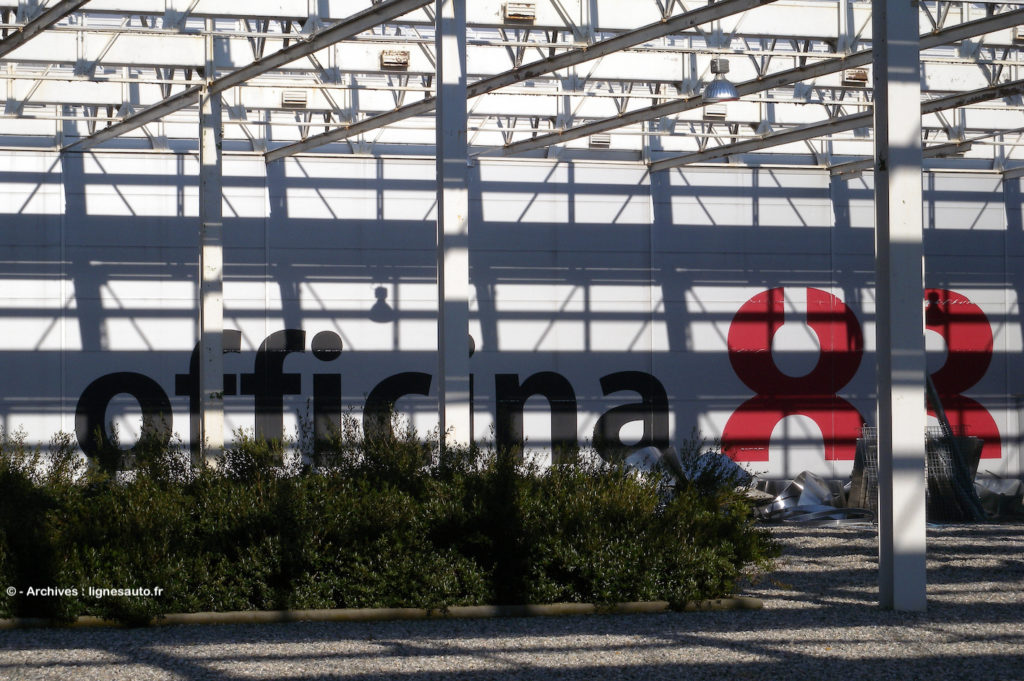
In 2007, the Fiat Group at the time inaugurated a new design centre. Housed in a former machine shop called ‘Officina 83’, this huge complex is located within the Mirafiori complex near Turin. This former factory notably produced the… 131 Mirafiori (!) but was also the site of some of the fiercest labour disputes in the 1970s. Design has made itself at home here with the studios of Fiat, Fiat Professional, Abarth, Lancia, Alfa Romeo and Maserati. The latter brand has just come under the wing of Jean-Philippe Imparato, who manages Europe and the wider European market.

The design centre has meeting rooms, a virtual demonstration room and two model presentation rooms that can accommodate up to 200 employees, designers and model makers (figure at the time of opening). ‘Officina 83’ was inaugurated in the presence of Fiat Vice-Chairman John Elkann and the group’s CEO at the time, Sergio Marchionne.

Interview by Christophe Bonnaud. Thanks to François Leboine for his time, and to the communications teams at Fiat France and Fiat Italy’s design department.

